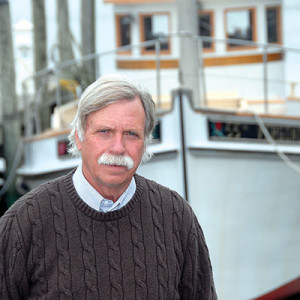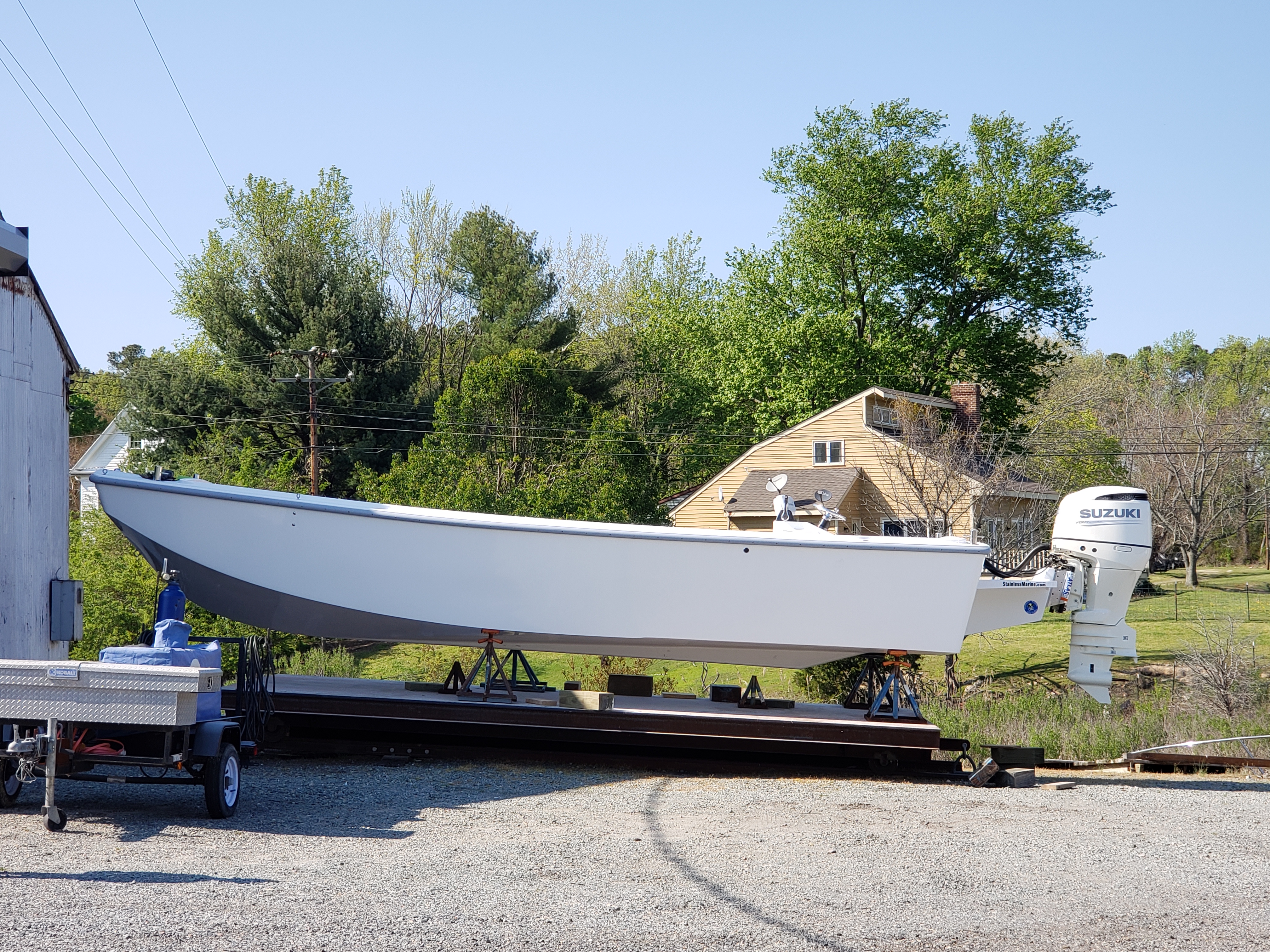The type of water being worked in and gear used by commercial fishermen determines specific features built into workboats. This is evident in Virginia. where Jennings Boatyard in Reedville, Va., launched in April its fourth garvey for the Chesapeake Bay’s oyster cage aquaculture fishery.
The garvey style has become a popular working platform for oystermen growing oysters in cages. Oystermen need a fast boat to get to and from oyster grounds, with plenty of flat deck surface to carry loaded and empty cages and a shallow enough draft to work in 6 to 16 inches of water.
The vessel also has to have the deck space for a hydraulic mast/gaff used to haul cages from the water. Larry Jennings’ 27' x 10' garvey provides all those features.
The firm’s latest vessel is for Purcell’s Seafood of Burgess, Va. The garvey will be used in the firm’s oyster aquaculture business. Purcell’s Seafood ships oysters all over the United States and to Canada.
The firm is an example of how Virginia’s investment in oyster aquaculture is paying off. Purcell’s Seafood first started experimenting with aquaculture in 2004 using rack-and-bag culture. The firm moved to growing oysters in cages.
The company received financial assistance through the Environmental Quality Incentives Program for gear cycling, rotating and cleaning 116 oyster cages. It later received funding and technical assistance through partnerships between the Natural Resources Conservation Service, the Virginia Institute of Marine Science and the Virginia Marine Resources Commission.
These partnerships with oystermen helped jump-start Virginia’s successful aquaculture fishery. The byproduct of that success is that some Virginia boatbuilders are getting orders for new boats.
Jennings builds his garveys out of Coosa composite board, which is a core material with fiberglass embedded in it. The hull, interior lining and top deck are glued together with 5200 3M adhesive.
The new garvey will be powered by a DF250-hp Suzuki V6 outboard engine. The engine is mounted on a stainless-steel bracket with a hydraulic Atlas Jack Plate. As the boat moves along into shoal waters, the hydraulic driven jack plate raises the motor up to provide more draft.
Jennings has orders for three more garveys. One is for an oysterman on the Northern Neck of Virginia, and the other two are for Montauk, N.Y., recreational fishermen who plan to use the boats for hook-and-line striped bass fishing.
Cape Charles Yacht Center in Cape Charles, Va., had the 62.5' x 19.1' x 6.2' deck boat Myrtle Virginia up on the hard in April. Owner Floyd “Bunky” Chance of Talbot County, Md., had planned to haul his boat closer to home.
The coronavirus pandemic, however, resulted in a shutdown of the yard in Maryland he had made arrangements with to haul the boat.
“I wanted to haul her a little closer to home, but I needed her ready for the opening day of shell season on May 11,” he says. Cape Charles was the closest haul for a boat the size of Myrtle Virginia.
Chance uses the boat to haul and plant oyster shells in Maryland’s Department of Natural Resources Habitat Oyster Restoration Program. This year, the program is scheduled to plant a total of 200,000 bushels of shell on Maryland’s public oyster grounds, says Chance.
The Myrtle Virginia will haul and plant about 20,000 bushels of that total. Chance and his 13-year-old grandson, Christian, scraped and painted the bottom and hull and caulked seams.
“I guess I was lucky we didn’t need any bottom or side boards replaced, but we did plenty of chinking (caulking) to get her ready,” he says.
Walt and Seth Chandler of Onancock, Va. were first featured in this column in the July 2014 issue for building a 29' x 11.6' x 6', semi V-bottom pram-bowed barge for an oysterman. The father and son boatbuilding team currently have a 30' x 12.6' recreational houseboat nearly complete made of glass-over-wood.
Interestingly, the Chandlers have gotten into a niche market building onshore “net houses” for clammers and crabbers who work the seaside of Virginia’s Eastern Shore.
The wooden A-frame roof sheds with garage doors are used by watermen for storage of trailered work skiffs; for making crab pots; and mending and storage of nets used in the seaside clam fishery. When clams are growing on the bottom, nets are used to blanket clams to protect them from skates, its number one predator.
The Chandlers are currently building a fourth net house. The houses are located at Willis Wharf and Quinby, Va. Diversification and survival in the South’s boatbuilding trade go hand-in-hand. “All we really want to do is build boats, but we have to do what we have to do to keep going,” says Walt Chandler.







